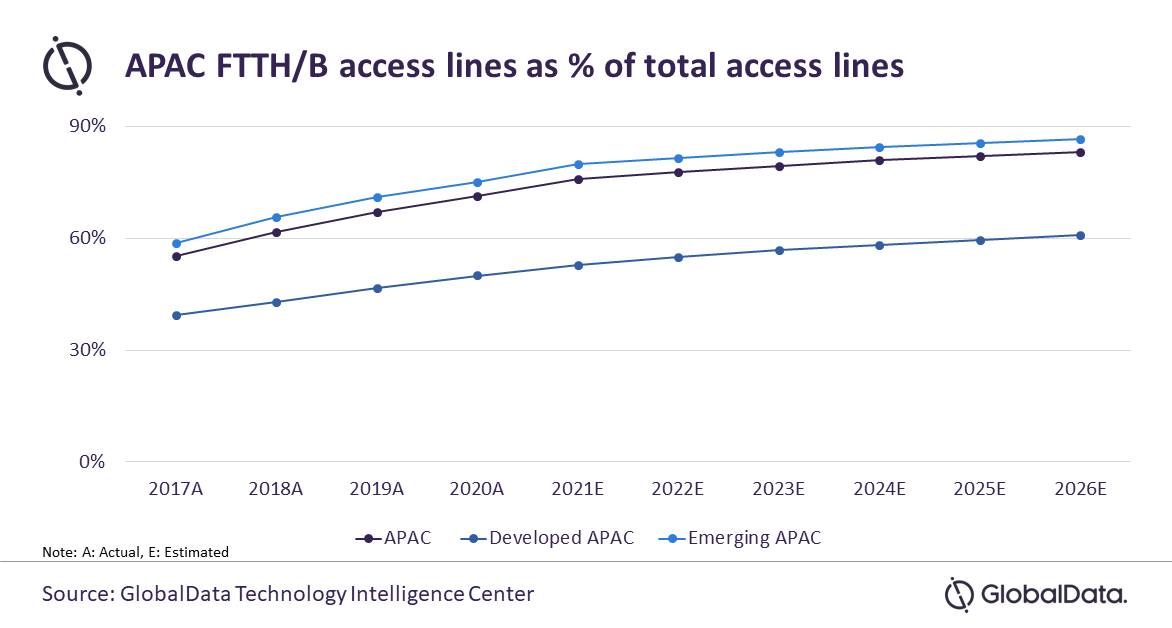
Fixed communications service revenue in the Asia-Pacific (APAC) region is set to increase at a compound annual growth rate (CAGR) of 1.7% to reach US$406.2bn in 2026, supported by the growing fixed broadband service adoption, particularly in the emerging markets of the region, forecasts GlobalData.
An analysis of GlobalData’s APAC Fixed Communications Forecast Pack reveals that APAC is a moderately developed region in terms of fixed broadband adoption, with fixed broadband account penetration of population reaching 18% at year-end 2021.
By 2026, fixed broadband account penetration in the region is expected to reach 21%, mainly driven by the ongoing broadband network expansions and service adoption in emerging countries like India, Indonesia, the Philippines, and Thailand, where governments are infusing investments in fixed broadband network infrastructure development plans.

Kantipudi Pradeepthi, Telecom Analyst at GlobalData, says: “The growth in the APAC fixed broadband market will be led by fiber broadband segment, which will see continued growth in the region. Fiber-optic access lines will account for a share of about 61% of the total fixed access lines in the developed APAC region by 2026 while its share in the total fixed lines in the emerging APAC markets will be at a relatively higher 80%.
Rising demand for high-speed internet services and competitively priced fiber broadband plans from operators with benefits like unlimited internet and access to major SVoD platforms will drive fiber broadband service adoption in the region.
In India, for instance, state-owned telco BSNL’s Superstar Premium Plans include unlimited 150Mbps broadband service for INR999 (US$13) per month with access to OTT platforms like Disney + Hot Star Premium, SonyLIV Premium and VooT Select.
China leads the overall APAC fixed broadband services market, with 98% of its broadband subscriptions on fiber optic lines by the end of 2021. The government’s Dual Gigabit Network Coordinated Development Action Plan (2021-2023) aims to expand fiber-optic networks to over 200 million households by the end of 2023.
Similarly, FTTH/B will account for almost 100% of the broadband lines in Singapore by 2026. This is backed by the aggressive approach and investments by the NetLink NBN Trust in fiber broadband network expansions.
Voice telephony penetration of the population in APAC, on the other hand, will remain stagnant at around 10% throughout the forecast period. While circuit switched telephony lines will decline at a CAGR of -7.4% over the forecast period, and packet switched telephony lines will grow at a CAGR of 3%, as various fiber roll-out programs across APAC encourage consumers to switch to VoIP.
Pradeepthi concludes “Despite an increase in the overall voice telephony access lines in the region, fixed voice revenue will continue to decline over the forecast period on account of increasing mobile voice and OTT voice usage.”





